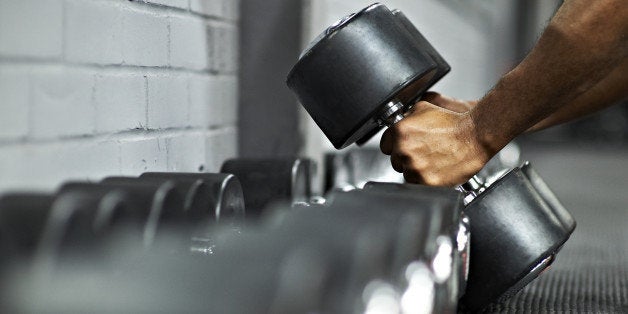

Photo Credit: brucewill03 via Compfight cc
Over the last few months, I've been trying to learn German. In my head, I have fantasies of walking the streets of Berlin speaking fluently with citizens and fitting in seamlessly.
Unfortunately, fluency on day seven of a new language isn't likely. In fact, I wasn't close to being fluent two months later. This fantasy I had in my head is a lot harder than I realized. I just want to get on with the speaking already.
However, just as a child has to start off learning his ABCs -- I have to start off by learning the everyday grammar rules of German. Is this part sexy, not exactly. But, neither is sitting through pointless college 101-level courses.
You can't build a house without a solid foundation. You can't learn a new language without learning grammar rules. You can't immediately flock to the gym without some preparation.
So, let's pretend we're going back into lecture hall and this time, no sleeping through lecture.
Here are the essential eight core principles to start strength training.
1. Start small
Work piles up. Projects are late. Kids have numerous sport practices. Your friends need your attention. Next thing you know, you haven't made it to the gym this week.
Anytime you're adding a new habit into your existing life, it's essential that you ease the habit into your life as seamlessly as possible.
Take it slow and give yourself time to adjust to your new habit. The main objective at the beginning is to get into the habit of strength training.
Everything else in life isn't going to slow down or vanish just because you want to start lifting weights.
2. Be patient
Need to look up some random fact or spelling? Easy, pull out your phone and find the results in 15 seconds.
In our instantaneous world, the concept of showing patience is almost as obsolete as the flip phone.
However, strength training isn't a skill that is mastered over a day, a week, or even a month. It's a skill that requires consistent practice.
Approach your strength training just as an artist approaches his paintings -- with a growth mindset, appreciation of the journey and a commitment to consistently improve their craft (think 1 percent a day).
Small daily improvements leads to large results (aka the body you want) over the long haul.
3. Start with bodyweight movements
When it comes time to buy a house -- you wouldn't buy one without a sturdy foundation. You wouldn't go to a surgeon who hasn't went to medical school.
Building a foundation is essential before moving on to anything else. Your body is no different with strength training.
Practicing bodyweight exercises before attempting weighted movements allows you to learn the basic biomechanics of how your body moves and feels.
Practicing with bodyweight movements allows you to fail and experiment in a safer setting. It's better to squat poorly using your own bodyweight than to have 100 pounds on your back while squatting poorly.
4. Think compound movements over isolation movements
The majority of individuals don't have hours to waste in the gym, therefore exercise selection needs to be precise.
Compound exercises such as squats, dead lifts, chin ups, and hip thrust are going to work multiple muscle groups simultaneously while creating a greater metabolic response (aka helping burn calories) within the body than isolation exercises such as bicep curls, tricep kick backs, and the hip abductor machine.
Not only are compound exercises saving time, but you're positively affecting hormones, improving joint stability, and improving your cardiovascular system.
5. Focus on getting stronger
If you're a guy or gal who wants to add some lean muscle, working out with the goal of increasing your strength should be the main priority initially.
Lifting with light reps for an endless amount of sets isn't going to build the body you want. Lifting challenging weights is the catalyst to shaping our bodies up and provides a solid foundation to workout from.
It might be frightening initially for women to be told to lift more challenging weights, but women don't carry enough of the hormone testosterone to build muscles as us men.
Besides improved stability, pain management, and bone health (preventing osteoporosis), lifting challenging weights is a stress relief and feels empowering.
6. Think quality over quantity
Lifting for marathon sessions that exceed an hour aren't better than lifting for only 30-40 minutes. Eventually, you run into the law of diminishing returns.
Think quality of exercise selections over quantity of exercises selected. A full body workout consisting of compound lifts for 30 minutes trumps a 90-minute workout that is filled with isolation exercises and long rest periods.
Get in and get out should be your motto.
7. Prioritize form above everything else
Lifting challenging weights is encouraged, but that doesn't mean you lift the weights up by any means necessary. In addition to increasing your chances of injury, lifting with bad form teaches you bad habits and doesn't train the muscle properly.
If you're squatting and you feel only your back working, take a timeout, lower the weights, and reevaluate your form.
Whatever exercise you're performing, you should feel that particular target muscle working. Leave the ego at the door and focus on your form and technique for optimal results.
8. Place a priority on rest and recovery
Strength training is vital to a successful transformation, but growth doesn't take place in the gym. Instead, it's determined by your actions outside of it.
Lifting weights merely tears our muscle fibers down, while proper nutrition and rest helps our bodies recover, grow, and become stronger for the next time we enter the weight room.
Always place rest over an extra workout session. Plus, it's nice to relax and treat our bodies well, we deserve it, life can be a grind at times.
To learn more about Julian and how to build the body you want while making your dent in the universe, visit''The Art of Fitness and Life'and receive your free starter kit to get started toward remarkability.